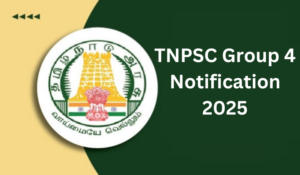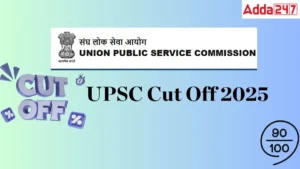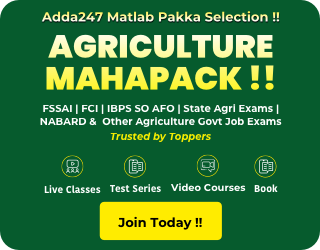Table of Contents
The Odisha Public Service Commission (OPSC) has recently issued a recruitment notification for an Assistant Soil Conservation Officer (ASCO), marking the first such announcement in nearly three years. This Class-II (Group-B) position falls under the Department of Agriculture & Farmers Welfare. A total of 81 vacancies are available across various categories, inviting eligible candidates to apply. The recruitment process includes a competitive examination, comprising a Written Test and an Interview, aimed at selecting qualified individuals for this pivotal role within the state’s agricultural sector.
OPSC ASCO Syllabus 2024
The OPSC ASCO Recruitment Notification for 2024 has been released, marking a significant opportunity for aspiring candidates in the field of Agriculture. Announced on July 6, the recruitment invites applications from eligible individuals who can apply online from July 16 to August 16. The selection process includes a rigorous Written Test and Interview stages, designed to assess the candidates’ suitability for the role of Assistant Soil Conservation Officer.
OPSC ASCO Exam Pattern
Candidates will be selected based on their performance in a Competitive Recruitment Examination, which includes a Written Test (MCQ Pattern) and an Interview.
- The Written Test consists of two papers, Paper I and Paper II.
- Total Marks: Each paper is worth 100 marks, totaling 200 marks for both papers combined.
- Multiple Choice Questions (MCQ) pattern.
- Number of Questions: Each paper contains 100 questions, each carrying one mark.
- Duration: The duration for each paper is 1.5 hours.
| Paper | Max. Marks | Duration |
|---|---|---|
| Paper I | 100 | 90 Minutes |
| Paper II | 100 | |
| Total | 200 | 90 Minutes |
- Place of Examination: The written examination for the OPSC ASCO Recruitment 2024 will primarily be held in Cuttack. Depending on the number of candidates from different zones, additional centers may include Bhubaneswar, Balasore, Berhampur, and Sambalpur.
- Choice of Examination Zone: Candidates are required to indicate their preferred examination zone (Bhubaneswar, Balasore, Berhampur, Sambalpur) while filling out the online application form.
OPSC ASCO Syllabus
Check the following article for detailed syllabi of different posts. Understanding the syllabus and exam format is crucial for applicants preparing for the OPSC ASCO Recruitment 2024. By familiarizing themselves with the syllabus beforehand, candidates can strategically allocate their time, prioritize key areas, and effectively prepare for the exam. This approach not only enhances their knowledge but also boosts confidence and improves their chances of success in the selection process.
Agriculture
Paper I
Paper II
| Unit | Topics |
|---|---|
| Unit-I | Agroforestry: Objectives, potential; Agroforestry systems: Sub-systems, practices; Planning for agroforestry: Constraints, diagnosis, design methodology; Selection of tree crop species; Agroforestry for food, feed, fuel, nutritional security; Soil improvement: Carbon sequestration, microclimate amelioration, industrial requirements. |
| Unit-II | Rainfed agriculture: Problems, prospects; Rainfall analysis: Droughts: Classification, causes, impacts, management strategies; Crops, cropping systems; Soil moisture, rainwater conservation: In-situ, ex-situ storage, water harvesting, recycling; Contingent crop planning under aberrant weather conditions; Dryland horticulture: Watershed planning, land capability classes. |
| Unit-III | Soil and water conservation: Issues, importance; Causes, agents of soil erosion; Water erosion: Hydrologic cycle, precipitation forms, runoff estimation; Forms of water erosion, gully classification, control measures; Erosion control principles; Contouring, strip cropping, bunding, terracing; Grassed waterways design; Water harvesting: Techniques, structures, farm ponds, reservoir types. |
| Unit-IV | Wastelands: Causes, distribution, sustainable development; Government policies, participatory approaches; Afforestation, shifting cultivation; Optimal land use: Reclamation of saline, sodic, acidic, waterlogged, eroded, polluted soils; Desertification: Impact, causes, prevention, control measures; Bio-remediation through multipurpose tree species. |
| Unit-V | Protected cultivation: Importance, scope; Controlled conditions, methods, techniques; Canopy management, irrigation, fertigation; Liquid fertilizers: Solubility, compatibility; Insect pest, disease management; Quality planting materials; High-value crops, off-season production in greenhouses; Precision farming components: Remote sensing, GIS, DGPS, VRA applications. |
Optional Subject: Agricultural Engineering
Paper I
| Unit | Topics |
|---|---|
| Unit I | Watershed Hydrology and Fluid Mechanics: Properties of fluids (ideal and real); Pressure measurement, Pascal’s law; Buoyancy, meta centre, stability of bodies; Fluid flow types (kinematics, dynamics); Bernoulli’s theorem, venturimeter, orifice meter; Laminar, turbulent flow in pipes; Darcy’s equation, hydraulic losses; Flow through orifices, notches, weirs; Open channel flow; Dimensional analysis; Hydrologic cycle; Rainfall measurement, analysis; Runoff estimation, hydrograph components. |
| Unit II | Irrigation and Drainage Engineering: Purpose, merits, demerits of irrigation; Measurement of irrigation water; Design, lining of irrigation channels; Underground pipe systems; Land leveling; Soil-water-plant relationship; Crop water requirement; Surface methods (border, basin, furrow); Waterlogging, drainage; Salt-affected soils, reclamation; Command area development; Rotational irrigation; Precision farming techniques. |
| Unit III | Soil and Water Conservation Engineering: Soil erosion causes, types; Gully erosion control; Rainfall erosivity, soil erodibility; Soil loss estimation; Erosion control measures (agronomical, engineering); Gully reclamation; Grassed waterways; Hydraulic principles in open channels; Soil erosion control structures; Wind erosion, control measures; Land capability classification; Water harvesting techniques; Structures (farm ponds, percolation ponds). |
| Unit IV | Groundwater Wells, Pumps, and Artificial Recharge: Groundwater occurrence, movement, aquifer types, properties; Well classification, design; Darcy’s law, hydraulic conductivity; Groundwater hydraulics; Well interference; Tube well design, construction; Groundwater exploration, drilling methods; Basin-wise groundwater development; Groundwater quality, pollution; Pumping systems (types, components, performance); Artificial recharge techniques. |
| Unit V | Watershed Planning and Management: Watershed characteristics; Watershed management concepts, objectives; Factors affecting watershed planning; Watershed delineation, prioritization; Community mobilization; Participatory watershed management; Water budgeting; Rainwater conservation; Dry farming techniques; Integrated watershed management; Remote sensing, GIS in planning; Watershed program execution, monitoring, evaluation; Project proposal formulation. |
Paper II
| Unit | Topics |
|---|---|
| Unit I – Farm Machinery and Equipment-I | Classification of farm machines; Crop production unit operations; Tillage machinery: Primary and secondary tillage, draft measurement, power requirements; Field capacities, field efficiency; Economics of machinery usage; Land reclamation equipment; Tillage equipment: Plows, cultivators, seed drills; Materials used in agricultural machinery; Heat treatment processes. |
| Unit II – Farm Machinery and Equipment-II | Plant protection equipment: Sprayers, dusters; Nozzles, calibration, chemical application rates; Intercultural equipment: Weeders; Fertilizer application equipment; Harvesting operations, methods, equipment; Mowers, reapers, binders; Threshing systems, principles; Grain and straw combines; Root crop diggers; Potato, groundnut diggers; Cotton harvesting mechanisms; Maize harvesting combines. |
| Unit III – Renewable Energy Sources and Applications | Solar energy: Solar thermal devices, photovoltaics; Wind energy: Conversion systems, wind farms; Biogas: Anaerobic digestion, biogas plants; Urban, municipal, industrial waste power generation; Ocean thermal, wave, tidal power; Biomass power generation. |
| Unit IV – Post Harvesting Engineering | Agricultural process unit operations; Grain processing; Cleaning, grading principles, equipment; Drying: Methods, equipment, drying equations; Grain storage principles, structures; Size reduction laws, crushers, mills; Material handling: Conveyors, elevators; Rice, wheat milling methods; Oilseed milling; Preservation methods; Fruit, vegetable processing; Peeling, slicing, juice extraction; Blanching, drying, freezing. |
| Unit V – Protected Cultivation, Sprinkler, and Micro Irrigation System | Greenhouse types, components, construction; Greenhouse environment management; Cooling, heating systems; Crops for greenhouse cultivation; Sprinkler irrigation systems: Types, design, performance evaluation; Drip irrigation systems: Design considerations, maintenance; Fertigation; Cold storage, freezing techniques; Modified atmosphere packaging; Cold chain logistics. |
Horticulture
Paper I
| Unit | Topics |
|---|---|
| Unit I – Horticulture: Scope, Importance, and Management | Scope, importance, and prospects of Horticulture; Role in national and state economy; Classification, nutritive value, area, production, exports, and imports of Horticultural crops; Horticultural zones of India; Training and pruning; Horticulture-based cropping systems; Soil management, nutrient management, weed management, water management; Important pests and diseases of Horticultural crops and their management; Physiological disorders; Use of plant growth regulators; Organic farming; Dryland horticulture; Precision Farming. |
| Unit II – Fruit and Plantation Crops | Scope, importance, classification, and breeding of fruit and plantation crops; Soil and climate requirements; Varieties and rootstocks; Planting techniques; Cultural practices; Nutrition and irrigation management; Physiological disorders and their management; Plant protection strategies; Harvesting techniques; Yield, storage, and processing of important fruit crops like mango, banana, citrus, guava, papaya, litchi, pineapple, jackfruit, sapota, aonla, ber, pomegranate, etc.; Plantation crops like coconut, areca nut, cashew nut, date palm, oil palm, cocoa, tea, coffee, palmyrah palm, etc. |
| Unit III – Vegetable Crops and Spices | Scope, prospects, economic importance, and export potential of vegetable crops; Off-season cultivation; Seed production; Soil and climate requirements; Varieties and nursery practices; Sowing/transplanting techniques; Nutrient and water management; Weed control; Use of chemicals and growth regulators; Plant protection measures; Physiological disorders; Harvesting and postharvest handling; Production technology of spices and condiments like ginger, turmeric, coriander, fenugreek, etc. |
| Unit IV – Floriculture and Ornamental Plants | Scope and importance of commercial floriculture; Production techniques of flower crops like rose, marigold, chrysanthemum, gladiolus, dahlia, tuberose, orchid, etc.; Ornamental plants including annuals, biennials, perennials, grasses, bulbous ornamentals, shrubs, climbers, trees, indoor plants, palms, cycads, cacti, succulents, and foliage plants; Types of ornamental gardens; Landscape architecture; Avenue planting; Bioaesthetic planning; Flower arrangement; Protected cultivation of ornamentals. |
| Unit V – Postharvest Technology and Processing | Importance and scope of Postharvest Technology; Maturity indices; Harvesting, handling, grading, storage, packaging, and transport of horticultural crops; Factors affecting quality; Physiological and biochemical changes; Delaying ripening process; Postharvest treatments; Pre-cooling and storage treatments; Packaging methods like vacuum packaging, cold storage, poly shrink packaging; Processing of products such as juices, jams, jellies, candies, preserves, pickles, chutneys, sauces, etc.; Preservation techniques; Quality control; Govt. policies on import and export. |
Paper II
| Unit | Topics |
|---|---|
| Unit I – Propagation and Nursery Management | Sexual and asexual methods of propagation; Seed dormancy; Nursery management of Horticultural crops; Nursery Registration Act; Nutrient management in nurseries; Plant protection measures in nurseries; Media for propagation in nursery beds; Different types of cuttings, layering, grafting, and budding techniques including cleft grafting, whip grafting, top grafting, bridge grafting, etc. |
| Unit II – Soil, Climate, and Water Management | Soils of India and Odisha; Problematic soils and their management; Soil micro-organisms and their importance; Manures and fertilizers: classification and their role in plant growth; Macro and micronutrients; Nutrient deficiency and toxicity; Integrated nutrient management for Horticultural crops; Bio-fertilizers; Nutrient use efficiency; Agro-climatic zones of India and Odisha; Agro-ecology of Horticultural crops; Weather and Climate; Climate change and its effects on Horticultural crops; Climate resilient Horticulture; Water resources of Odisha and India; Water requirement of Horticultural crops; Critical stages of crop growth for irrigation; Effects of moisture stress on plant growth; Methods of irrigation: surface, sub-surface, and overhead methods; Fertigation; Water holding capacity, field capacity, permanent wilting point; Water budgeting; Water management in protected cultivation. |
| Unit III – Medicinal and Aromatic Crops, Agroforestry | Production technology of important medicinal and aromatic crops such as Withania, periwinkle, Rauvolfia, isabgol, opium poppy, belladonna, cinchona, lemon grass, rosemary, palmarosa, citronella grass, vetiver, lavender, geranium, patchouli, mint, Ocimum, etc.; Agroforestry and social forestry; Agroforestry systems: agri-silviculture, silvopastoral, horti-silviculture, horti-silvopastoral, shifting cultivation, home gardens, alley cropping, intercropping, windbreaks, shelterbelts, and energy plantations; Multi-purpose tree species. |
| Unit IV – Entrepreneurship, Extension Education, and Marketing | Entrepreneurship development in Horticulture; Transfer of technology from lab to land; Scope and importance of Participatory Rural Appraisal (PRA) & Rapid Rural Appraisal (RRA); Methods of communication; ICT in Extension education; Demand and supply; Cost of cultivation of Horticultural crops; Preparation of projects for Horticultural crops; Marketing of Horticultural crops; Marketing Process: Need for marketing, Role of marketing, Marketing functions, Classification of markets, Constraints in marketing of Horticultural produce. |
| Unit V – Pest and Disease Management, Biodiversity, and Seed Technology | Pests and diseases of Horticultural crops; Integrated pest and disease management; Physiological disorders of Horticultural crops and their management; Beneficial insects and microorganisms; Biodiversity and its conservation; Watershed management; Wasteland reclamation; Natural Disasters and mitigation strategies; Seed purity, seed quality, seed germination, seed dormancy, seed certification, and seed production of Horticultural crops. |
Forestry
Paper I
| Unit | Topics |
|---|---|
| Unit 1: General Silviculture | Forests: role in soil conservation, carbon sequestration, and other benefits; Importance of silviculture; Classification of forests and forest types; Site factors influencing vegetation: climatic, edaphic, topographic, and biotic factors; Natural regeneration of forests from seeds and vegetative parts; Artificial regeneration of forests: species choice, site selection, methods, and spacing; Plantation development: nursery propagation, infrastructure, containers, site preparation, planting pattern, maintenance, and plantation journal; Tending operations: weeding, cleaning, thinning, pruning, improvement felling, salvage cutting, sanitation cutting, girdling, and climber control; Plantation on difficult sites. |
| Unit 2: Silvicultural Systems | Characteristics of silvicultural systems: pattern of felling, method of regeneration, tending of new crop, and character of new crop; Classification of silvicultural systems; Characteristics, suitability, advantages, and disadvantages of different systems such as Clear felling, Uniform system, Group system, Indian irregular shelterwood system, Selection system, Group selection system, Accessory systems, Simple coppice, Coppice of two rotation, Shelterwood coppice, Coppice with standards, Coppice with reserves, Coppice selection, Pollard system; Culm selection system in bamboo. |
| Unit 3: Silviculture of Trees | Silviculture of important trees: economic importance, description, distribution, site factors, phenology, silvicultural characters, natural regeneration, artificial regeneration, tending operations, insect pests, and diseases for species including Abies pindrow, Acacia auriculiformis, Acacia catechu, Acacia nilotica, Albizia lebbek, Azadirachta indica, Bambusa bambos, Bambusa vulgaris, Casuarina equisetifolia, Cedrus deodara, Dalbergia sissoo, Dendrocalamus strictus, Eucalyptus tereticornis, Leucaena leucocephala, Picea smithiana, Pinus roxburghii, Populus deltoides, Prosopis cineraria, Prosopis juliflora, Santalum album, Shorea robusta, Tectona grandis. |
| Unit 4: Forest Soils, Soil Conservation, and Watershed Management | Forest Soils: classification, factors affecting soil formation; physical, chemical, and biological properties; Soil conservation: erosion causes, types (wind and water), conservation and management techniques for eroded soils/areas, windbreaks, shelter belts, soil organic matter maintenance, lopping for green leaf manuring, forest leaf litter and composting, role of microorganisms (N and C cycles, VAM); Watershed Management: concepts, mini-forests, forest trees in resource management, forest hydrology, watershed development (torrent control, river channel stabilization, avalanche, landslide control, degraded areas rehabilitation), hilly/mountain areas, environmental functions, water-harvesting, conservation, groundwater recharge, integrating trees/crops/grasses/fodders. |
| Unit 5: Tree Improvement and Seed Technology | Tree improvement concepts, methods, techniques, variation use, provenance, seed source, exotics; Quantitative aspects of forest tree improvement, seed production, seed orchards, progeny tests, use in natural forest/stand improvement, genetic testing programming, selection/breeding for disease/insect resistance, adverse environment, genetic base, forest genetic resources, gene conservation in situ/ex-situ, cost-benefit ratio, economic evaluation. |
Paper II
| Unit | Topics |
|---|---|
| Unit 1: Agroforestry | Agroforestry: concept, scope, advantages, disadvantages. Classification of agroforestry systems: Agrisilvicultural, Silvipastoral, Agrisilvipastoral, Miscellaneous. Principles of species selection. Agroforestry in different agroecological zones. Agroforestry for timber, industrial raw material, energy and biomass production, NTFP production, soil improvement, water conservation. Tree-Crop interaction. Tree management. Trees suitable for agroforestry. Diagnosis & Design. Agroforestry extension. National Agroforestry Policy of India. |
| Unit 2: Forest Mensuration and Inventory | Scope of forest mensuration. Units of measuring tree parameters: diameter, girth, height, volume, age, form, growth. Preparation of volume tables. Current annual increment, mean annual increment, stump analysis. Measurement of tree crops: diameter, height, age, volume. Forest inventory: kinds, sampling methods, sample plots, point sampling. Estimation of stand yield: yield table, content, preparation, uses. Stand table. Forest cover monitoring through remote sensing. |
| Unit 3: Forest Ecology and Ethnobotany | Forest ecology: biotic and abiotic components, ecosystems, community concepts, succession, climax, productivity, nutrient cycling, water relations. Physiology in stress environments (drought, water logging, salinity, alkalinity). Taxonomic classification, herbaria, arboreta. Conservation of forest ecosystems. Role of ethnobotany in Indian Systems of Medicine. |
| Unit 4: Forest Products and Utilization | Environmentally sound forest harvesting practices: logging, extraction, transportation, storage, sale. Non-Timber Forest Products (NTFPs): gums, resins, oleoresins, fibers, oil seeds, nuts, rubber, canes, bamboos, medicinal plants, charcoal, lac, shellac, Katha, Bidi leaves. Wood seasoning, preservation principles: air, kiln, solar dehumidification, steam heated, electrical kilns. Composite wood, adhesives, plywood, fiber boards, particle boards, pulp-paper, rayon. Raw material supply, wood substitution, plantation wood utilization, problems, possibilities. |
| Unit 5: Forest Economics and Legislation | Forest economics: principles, cost-benefit analysis, demand-supply estimation, market trends, production-consumption patterns, market structures, private sector, cooperatives, corporate financing. Legislation: forest development history, Forest Policies (1894, 1952, 1990, 1988), People’s involvement, Joint Forest Management, women’s involvement, land use issues, timber/non-timber products, sustainable forest management, industrialization policies, institutional/structural changes. Forest laws: Indian Forest Act 1927, Forest Conservation Act 1980, Wildlife Protection Act 1972 and amendments, Indian Penal Code application to Forestry, Forest Rights Act 2006. |




 TNPSC Group 4 Notification 2025, Apply O...
TNPSC Group 4 Notification 2025, Apply O...
 MPPSC Food Safety Officer Notification 2...
MPPSC Food Safety Officer Notification 2...
 UPSC Cut Off 2025 Out, Prelims, Mains an...
UPSC Cut Off 2025 Out, Prelims, Mains an...


 Adda247 Job portal has complete information about all Sarkari Jobs and Naukri Alerts, its latest recruitment notifications, from all state and national level jobs and their updates.
Adda247 Job portal has complete information about all Sarkari Jobs and Naukri Alerts, its latest recruitment notifications, from all state and national level jobs and their updates.